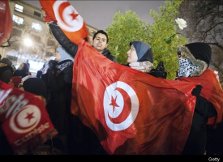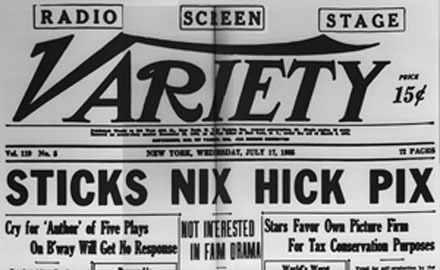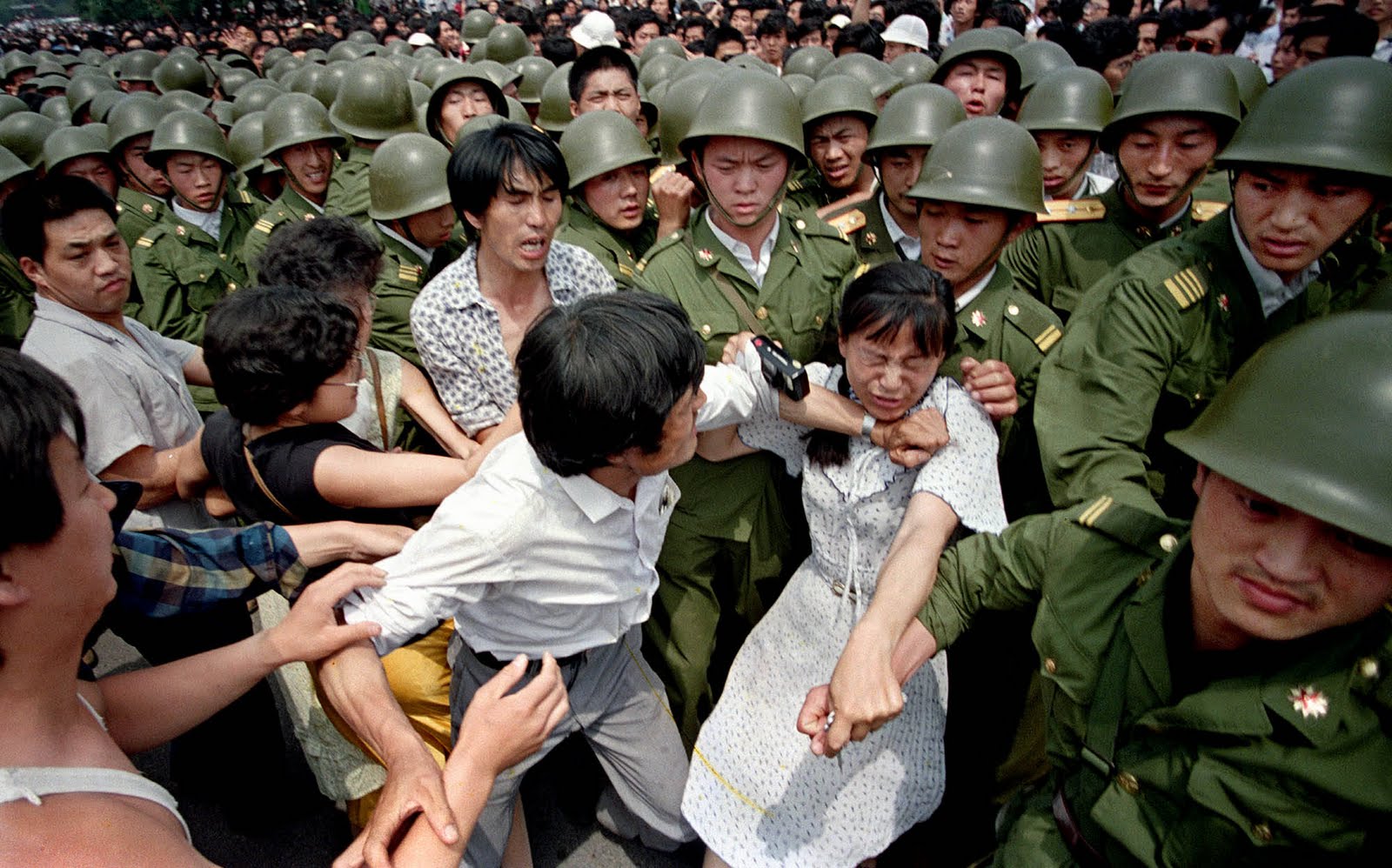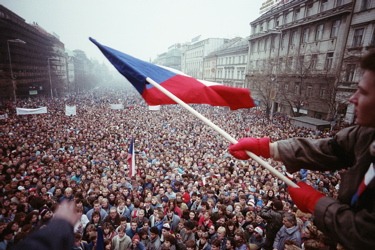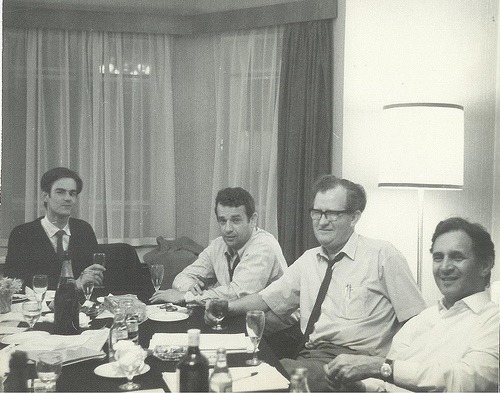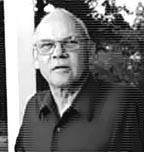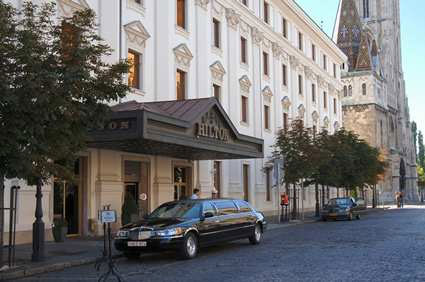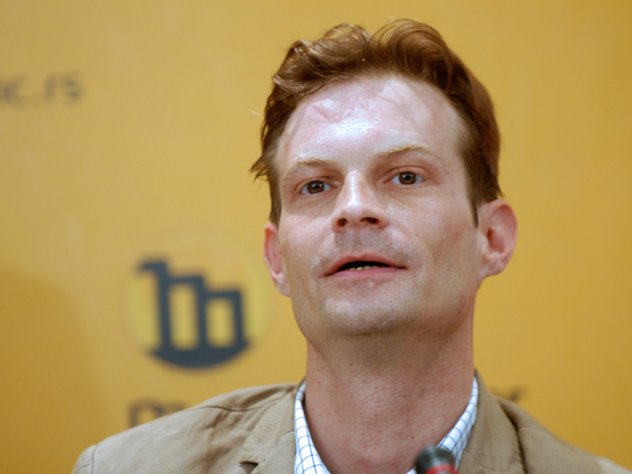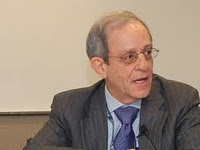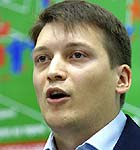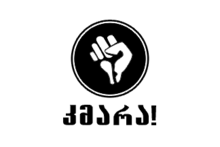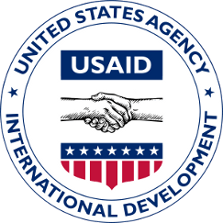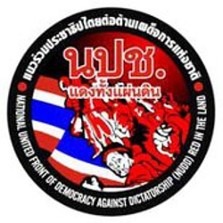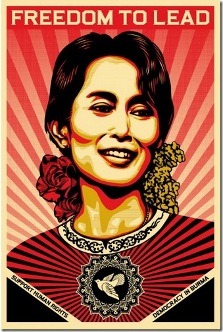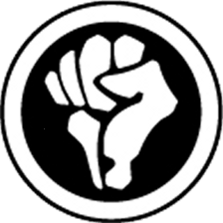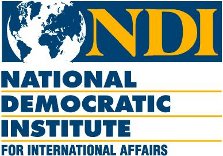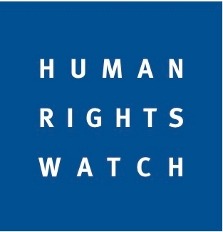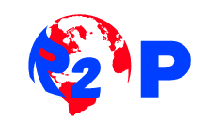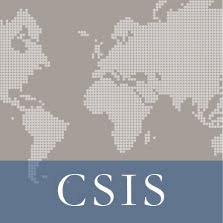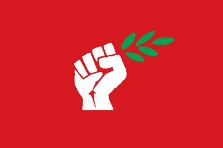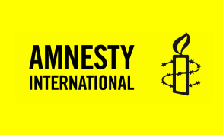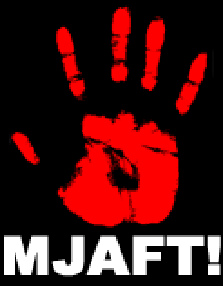Jonathan Mowat: “A New Gladio in Action” (2005)
Once again reviewing the anatomy of these utterly dishonest Made in USA "revolutions"
|
I N T R O D U C T I O N [dropcap]C[/dropcap]olor revolutions are, without a doubt, one of the main features of global political developments today. Should the casual reader immediately wonder what a "color revolution" is, keep reading, our view here is unique, but we most certainly have some answers. Let us first begin with the Wikipedia definition. That website introduces the concept by stating the following: "Color revolution(s) is a term used by the media to describe related [political] movements that developed in several societies in the CIS (former USSR) and Balkan states during the early 2000s. Some observers have called the events a revolutionary wave. student activists in organizing creative non-violent resistance. "These movements have been successful in Serbia (especially the Bulldozer Revolution of 2000), in Georgia's Rose Revolution (2003), in Ukraine's Orange Revolution (2004), in Lebanon's Cedar Revolution and (though more violent than the previous ones) in Kyrgyzstan's Tulip Revolution (2005), in Kuwait's Blue Revolution (2005), in Iraq's Purple Revolution (2005), and in Czechoslovakia's Velvet Revolution (1989), but failed in Iran's Green Revolution (2009–2010) . Each time massive street protests followed disputed elections or request of fair elections and led to the resignation or overthrow of leaders considered by their opponents to be authoritarian." What the Wikipedia article fails to mention is the massive foreign funding, and at least any notion that color revolutions are psychosocial operations of deception. It's a fact that Western governments (especially the US government) and various non-governmental organizations (NGOs) spend millions of dollars to co-opt and "channel" local populations of targeted countries against their own political leadership. Empty democracy slogans and flashy colors aside, we argue that color revolutions are good old-fashioned regime change operations: destabilization without the tanks. The secret ingredient is a sophisticated science used to manipulate emotions and circumvent critical thinking. History shows that, to much of the power elite, humanity is seen as a collection of nerve endings to be pushed and pulled one way or the other, sometimes made to tremble in fear, sometimes made to salivate like Pavlov's dogs. These days the manipulation is so pervasive, so subtle, so effective, that even critical individuals at times must necessarily fail to recognize how often--or in what context--they have fallen prey. Of course fear is the most obvious emotion played upon to effect massive social change. One need only to reflect upon the last ten years, since 9/11, to know that fear is a primary instrument used to initiate and justify dangerous shifts in public policy. But as humanity has been physiologically equipped with a range of emotions, and is not merely arrested and controlled by fear alone, a strata of behavioral and political science also found it useful to master the flip-side of the emotional spectrum, and by that we mean desire, and all that drives groups of individuals to act, even in the face of fear, in pursuit of something worthwhile. Looking beneath the facade of the color revolutionary movement we also find a desire-based behavioral structure, in particular one that has been built upon historical lessons offered by social movements and periods of political upheaval. It then makes sense that the personnel of such operations include perception managers, PR firms, pollsters and opinion-makers in the social media. Through the operational infrastructure, these entities work in close coordination with intelligence agents, local and foreign activists, strategists and tacticians, tax-exempt foundations, governmental agencies, and a host of non- governmental organizations. Because the operatives perform much of their craft in the open, their effectiveness is heavily predicated upon their ability to veil the influence backing them, and the long-term intentions guiding their work. Their effectiveness is predicated on their ability to deceive, targeting both local populations and foreign audiences with highly-misleading interpretations of the underlying causes provoking these events. And this is where we come in: to help deconstruct the deception. But we will not just cover color revolutions here, as color revolutions are bound up in the larger geopolitical universe. A color revolution is only an instrument of foreign policy--only a tool--the ultimate object being the geopolitical advantages gained by powerful financiers and the brain trust they employ. It follows that understanding geopolitical context (and motive) is necessary to understanding the purpose of the color revolution. It is an issue that takes time and patience. And it is for those that are willing to provide this time and patience that we offer this site. "Gene Sharp started out the seminar by saying 'Strategic nonviolent struggle is all about political power.' And I thought, 'Boy is this guy speaking my language,' that is what armed struggle is about."—Col. Robert Helvey WASHINGTON, March 19, 2005—The U.S. government and allied forces' year-end installation of Victor Yushchenko as president of Ukraine have completed the field-testing of the "Postmodern Coup." Employing and fine-tuning the same sophisticated techniques used in Serbia in 2000 and Georgia in 2003 (and unsuccessfully in Belarus in 2001), it is widely expected that the United States will attempt to apply the same methods throughout the former Soviet Union. "We have to confront those forces that are committed to reproduce a Georgian or Ukrainian scenario," Kyrgyz President Askar Akayev stated on December 26, the day of the coup, "we'll not allow the import of Rose [Georgian] and Orange [Ukrainian] revolutions in our country." One day later, the Kazakh government launched a criminal case against the Soros Foundation for tax evasion, one of the coups' financiers. And last spring, Uzbek President Islam Karimov accused Soros of overseeing the revolution in Georgia, and condemning his efforts to "fool and brainwash" young intelligentsia in his own country, banned the group. The same networks are also increasingly active in South America, Africa, and Asia. Top targets include Venezuela, Mozambique, and Iran, among others. The method employed is usefully described by The Guardian's Ian Traynor in a November 26, 2004, article entitled "US campaign behind the turmoil in Kiev," during the first phase of the coup. With their websites and stickers, their pranks and slogans aimed at banishing widespread fear of a corrupt regime, the democracy guerrillas of the Ukrainian Pora youth movement have already notched up a famous victory—whatever the outcome of the dangerous stand-off in Kiev. [T]he campaign is an American creation, a sophisticated and brilliantly conceived exercise in western branding and mass marketing that, in four countries in four years, has been used to try to salvage rigged elections and topple unsavory regimes. Funded and organized by the US government, deploying US consultancies, pollsters, diplomats, the two big American parties and US non-government organizations, the campaign was first used in Europe in Belgrade in 2000 to beat Slobodan Milosevic at the ballot box. Much of the coup apparatus is the same that was used in the overthrow of President Fernando Marcos of the Philippines in 1986, the Tiananmen Square destabilization in 1989, and Vaclav Havel's "Velvet revolution" in Czechoslovakia in 1989. As in these early operations, the National Endowment for Democracy (NED), and its primary arms, the National Democratic Institute for International Affairs (NDI) and International Republican Institute (IRI), played a central role. The NED was established by the Reagan Administration in 1983, to do overtly what the CIA had done covertly, in the words of one its legislative drafters, Allen Weinstein. The Cold War propaganda and operations center, Freedom House, now chaired by former CIA director James Woolsey, has also been involved, as were billionaire George Soros' foundations, whose donations always dovetail those of the NED. Iconic photo documenting Czechoslovakia's "Velvet Revolution" in 1989 What is new about the template bears on the use of the Internet (in particular chat rooms, instant messaging, and blogs) and cell phones (including text-messaging), to rapidly steer angry and suggestible "Generation X" youth into and out of mass demonstrations and the like—a capability that only emerged in the mid-1990s. "With the crushing ubiquity of cell phones, satellite phones, PCs, modems and the Internet," Laura Rosen emphasized in Salon Magazine on February 3, 2001,"the information age is shifting the advantage from authoritarian leaders to civic groups." She might have mentioned the video games that helped create the deranged mindset of these "civic groups." The repeatedly emphasized role played by so-called "Discoshaman" and his girlfriend "Tulipgirl," in assisting the "Orange Revolution" through their aptly named blog, "Le Sabot Post-Modern," is indicative of the technical and sociological components involved. A Civilian Revolution in Military Affairs The emphasis on the use of new communication technologies to rapidly deploy small groups, suggests what we are seeing is civilian application of Secretary Donald Rumsfeld's "Revolution in Military Affairs" doctrine, which depends on highly mobile small group deployments "enabled" by "real time" intelligence and communications. Squads of soldiers taking over city blocks with the aid of "intelligence helmet" video screens that give them an instantaneous overview of their environment, constitute the military side. Bands of youth converging on targeted intersections in constant dialogue on cell phones constitute the doctrine's civilian application. This parallel should not be surprising since the US military and National Security Agency subsidized the development of the Internet, cellular phones, and software platforms. From their inception, these technologies were studied and experimented with in order to find the optimal use in a new kind of warfare. The "revolution" in warfare that such new instruments permit has been pushed to the extreme by several specialists in psychological warfare. Although these military utopians have been working in high places (for example the RAND Corporation) for a very long time, to a large extent they only took over some of the most important command structures of the US military apparatus with the victory of the neoconservatives in the Pentagon of Donald Rumsfeld. The new techniques of warfare include the use of both lethal (violent) and nonlethal (nonviolent) tactics. Both ways are conducted using the same philosophy, infrastructure, and modus operandi. It is what is known as Cyberwar. For example, the tactic of swarming is a fundamental element in both violent and nonviolent forms of warfare. This new philosophy of war, which is supposed to replicate the strategy of Genghis Khan as enhanced by modern technologies, is intended to aid both military and non-military assaults against targeted states through what are, in effect, "high tech" hordes. In that sense there is no difference, from the standpoint of the plotters, between Iraq or Ukraine, if only that many think the Ukraine-like coup is more effective and easier. Indicative of the common objective are the comments of the theoreticians of the post modern coup, for example, Dr. Peter Ackerman [pictured above], the author of "Strategic Nonviolent Conflict" (Praeger 1994). Writing in the "National Catholic Reporter" on April 26, 2002, Dr. Ackerman offered the following corrective to Bush's Axis of Evil speech targeting Iraq, Iran, and North Korea, which he otherwise approved: "It is not true that the only way to 'take out' such regimes is through U.S. military action." Speaking at the "Secretary's Open Forum" at the State Department on June 29, 2004, in a speech entitled, "Between Hard and Soft Power: The Rise of Civilian-Based Struggle and Democratic Change," Ackerman elaborated on the concept involved. He proposed that youth movements, such as those used to bring down Serbia, could bring down Iran and North Korea, and could have been used to bring down Iraq—thereby accomplishing all of Bush's objectives without relying on military means. And he reported that he has been working with the top US weapons designer, Lawrence Livermore Laboratories, on developing new communications technologies that could be used in other youth movement insurgencies. "There is no question that these technologies are democratizing," he stressed, in reference to their potential use in bringing down China, "they enable decentralized activity. They create, if you will, a digital concept of the right of assembly." "Swarming Adolescents" and "Rebellious Hysteria" As in the case of the new communication technologies, the potential effectiveness of angry youth in postmodern coups has long been under study. As far back as 1967, Dr. Fred Emery [pictured third from left], then director of the Tavistock Institute, and an expert on the "hypnotic effects" of television, specified that the then new phenomenon of "swarming adolescents" found at rock concerts could be effectively used to bring down the nation-state by the end of the 1990s. This was particularly the case, as Dr. Emery reported in "The next thirty years: concepts, methods and anticipations,'' in the group's "Human Relations," because the phenomena was associated with "rebellious hysteria." The British military created the Tavistock Institute as its psychological warfare arm following World War I; it has been the forerunner of such strategic planning ever since. Dr. Emery's concept saw immediate application in NATO's use of "swarming adolescents" in toppling French President Charles De Gaulle in 1967. Gladio and James Bond Get a Youth Group The creation and deployment of coups of any kind requires agents on the ground. The main handler of these coups on the "street side" has been the Albert Einstein Institution, which was formed in 1983 as an offshoot of Harvard University under the impetus of Dr. Gene Sharp, and which specializes in "nonviolence as a form of warfare." Dr. Sharp had been the executive secretary of A.J. Muste, the famous U.S. Trotskyite labor organizer and peacenik. The group is funded by Soros and the NED. Albert Einstein's president is Col. Robert Helvey, a former US Army officer with 30 years of experience in Southeast Asia. He has served as the case officer for youth groups active in the Balkans and Eastern Europe since at least 1999. Such formulations suggest that Albert Einstein activities were, ironically, coherent (or, possibly updating) the infamous NATO's "Gladio" stay-behind network, whose purpose was to combat possible Soviet occupation through a panoply of military and nonmilitary means. The investigations into Gladio, and those following the 1978 assassination of former Prime Minister Aldo Moro, also shed some light (immediately switched off) on a professional apparatus of destabilization that had been invisible for several decades to the public. It is noteworthy that the former deputy chief of intelligence for the US Army in Europe, Major General Edward Atkeson, first "suggested the name 'civilian based defense' to Sharp," John M. Mecartney, Coordinator of the Nonviolent Action for National Defense Institute, reports in his group's CBD News and Opinion of March 1991. By 1985, Gen. Atkeson, then retired from the US Army, was giving seminars at Harvard entitled "Civilian-based Defense and the Art of War. The Albert Einstein Institution reports, in its "1994-99 Report on Activities," that Gen. Atkeson also served on Einstein's advisory board in those years. Following his posting as the head of US Army intelligence in Europe, and possibly concurrently with his position at the Albert Einstein Institution, the Washington-based Center for Strategic and International Studies (CSIS) reports that Gen. Atkeson, who also advised CSIS on "international security." served as "national intelligence officer for general purpose forces on the staff of the director of Central Intelligence." A 1990 variant of Sharp's book, "Civilian-Based Defense: A Post-Military Weapons System," the Albert Einstein Institution reports, "was used in 1991 and 1992 by the new independent governments of Estonia, Latvia, and Lithuania in planning their defense against Soviet efforts to regain control." As we shall see below, with such backing, Col. Helvey and his colleagues have created a series of youth movements including Otpor! in Serbia, Kmara! in Georgia, Pora! in Ukraine, and the like, which are already virally replicating other sects throughout the former Soviet Union, achieving in civilian form what had not been possible militarily in the 1980s. The groups are also spreading to Africa and South America. And Dope Too? Col. Helvey's long experience in Myanmar in training insurgent ethnic minorities in a region that is the center of world opium production raises another question of great bearing on "post modern coups." That is: what is the role of narcotic mafias in facilitating "regime change?" Law enforcement agencies from many nations, including the United States, have long reported that the Balkans is the major narcotics pipeline into Western Europe. Ukraine is said to be a top conduit, as is Georgia. Kyrghyzstan, now at the top of the hit list, is another opium conduit. And George Soros "the Daddy Warbucks of drug legalization," has been the top "private" funder of all the Eastern European and Central Asian insurgent groups, as well as those in Myamar. The spread of such mafias, is, of course, one of the most efficient ways of infiltrating and corrupting government agencies of targeted states. The Serbian Virus The networks and methods used in the Serbian through Ukraine sequence were first publicly revealed in a Washington Post article on Dec. 11, 2000, by Michael Dobbs, entitled. "U.S. Advice Guided Milosevic Opposition: Political Consultants Helped Yugoslav Opposition Topple Authoritarian Leader." He reports that: U.S.-funded consultants played a crucial role behind the scenes in virtually every facet of the anti-Milosevic drive, running tracking polls, training thousands of opposition activists and helping to organize a vitally important parallel vote count. U.S. taxpayers paid for 5,000 cans of spray paint used by student activists to scrawl anti-Milosevic graffiti on walls across Serbia, and 2.5 million stickers with the slogan "He's Finished," which became the revolution's catchphrase.
Some Americans involved in the anti-Milosevic effort said they were aware of CIA activity at the fringes of the campaign, but had trouble finding out what the agency was up to. Whatever it was, they concluded it was not particularly effective. The lead role was taken by the State Department and the U.S. Agency for International Development, the government's foreign assistance agency, which channeled the funds through commercial contractors and nonprofit groups such as NDI and its Republican counterpart, the International Republican Institute (IRI). Helvey, who served two tours in Vietnam, introduced the Otpor activists to the ideas of American theoretician Gene Sharp, whom he describes as "the Clausewitz of the nonviolence movement," referring to the renowned Prussian military strategist. Peter Ackerman, the above-mentioned coup expert, analyzed and popularized the methods involved in a 2001 PBS documentary-series and book, "A Force More Powerful: A Century of Nonviolent Conflict," together with retired US Airforce officer Jack DuVall. Focusing on youth organizing, they report: After the NATO bombing, which had helped the regime suppress opposition, Otpor's organizing took hold with a quiet vengeance. It was built in some places around clubhouses where young people could go and hang out, exercise, and party on the weekends, or more often it was run out of dining rooms and bedrooms in activists' homes. These were "boys and girls 18 and 19 years old" who had lived "in absolute poverty compared to other teenagers around the world," according to Stanko Lazendic, an Otpor activist in Novi Sad. "Otpor offered these kids a place to gather, a place where they could express their creative ideas." In a word, it showed them how to empower themselves. Helvey emphasized how to break the people's habits of subservience to authority, and also how to subvert: the regime's "pillars of support," including the police and armed forces. Crucially, he warned them against "contaminants to a nonviolent struggle," especially violent action, which would deter ordinary people from joining the movement: and alienate the international community, from which material and financial assistance could be drawn. As Popovic put it: "Stay nonviolent and you will get the support of the third party."
No Lack of Opportunities for Employment In the aftermath of the Serbian revolution, the National Endowment for Democracy, Albert Einstein Institution, and related outfits helped establish several Otpor-modeled youth groups in Eastern Europe, notably Zubr in Belarus in January 2001; Kmara in Georgia, in April 2003; and Pora in Ukraine in June 2004. Efforts to overthrow Belarus President Alexsander Luschenko failed in 2001, while the US overthrow of Georgian President Eduard Schevardnadze was successfully accomplished in 2003, using Kmara as part of its operation. Commenting on that expansion, Albert Einstein staffer Chris Miller, in his report on a 2001 trip to Serbia found on the group's website, reports: Since the ousting of Milosevic, several members of Otpor have met with members of the Belarusian group Zubr (Bison). In following developments in Belarus since early this year, It is clear that Zubr was developed or at least conceptualized, using Otpor as a model. Also, [Albert Einstein's report] From Dictatorship to Democracy is available in English on the Zubr website at www.zubr-belarus.com. Of course, success will not be achieved in Belarus or anywhere else, simply by mimicking the actions taken in Serbia. However the successful Serbian nonviolent struggle was highly influenced and aided by the availability of knowledge and information on strategic nonviolent struggle and both successful and unsuccessful past cases, which is transferable. And with funding provided by Freedom House and the US government, Otpor established the Center for Nonviolent Resistance, in Budapest, to train these groups. Describing the deployment of this youth movement, Ian Trainor, in the above cited Guardian November 2004 article, reports: In the centre of Belgrade, there is a dingy office staffed by computer-literate youngsters who call themselves the Centre for Non-violent Resistance. If you want to know how to beat a regime that controls the mass media, the judges, the courts, the security apparatus and the voting stations, the young Belgrade activists are for hire. They emerged from the anti-Milosevic student movement, Otpor, meaning resistance. The catchy, single-word branding is important. In Georgia last year, the parallel student movement was Kmara. In Belarus, it was Zubr. In Ukraine, it is Pora, meaning high time.
Stickers, spray paint and websites are the young activists' weapons. Irony and street comedy mocking the regime have been hugely successful in puncturing public fear and enraging the powerful. Last year, before becoming president in Georgia, the US-educated Mr Saakashvili traveled from Tbilisi to Belgrade to be coached in the techniques of mass defiance. In Belarus, the US embassy organized the dispatch of young opposition leaders to the Baltic, where they met up with Serbs traveling from Belgrade. In Serbia's case, given the hostile environment in Belgrade, the Americans organized the overthrow from neighboring Hungary—Budapest and Szeged. In recent weeks, several Serbs traveled to the Ukraine. Indeed, one of the leaders from Belgrade, Aleksandar Maric, was turned away at the border. The Democratic party's National Democratic Institute, the Republican party's International Republican Institute, the US State Department and USAID are the main agencies involved in these grassroots campaigns as well as the Freedom House NGO and billionaire George Soros' Open Society Institute. An Associated Press article by Dusan Stojanovic, on November 2, 2004, entitled "Serbia's export: Peaceful Revolution," elaborates: "We knew there would be work for us after Milosevic," said Danijela Nenadic, a program coordinator of the Belgrade-based Center for Nonviolent Resistance. The nongovernmental group emerged from Otpor, the pro-democracy movement that helped sweep Milosevic from power by organizing massive and colorful protests that drew crowds who never previously had the courage to oppose the former Yugoslav president. In Ukraine and Belarus, tens of thousands of people have been staging daily protests—carbon copies of the anti-Milosevic rallies—with "training" provided by the Serbian group. Addendum (by the editors) Timeline: Otpor! founded in Belgrade, Serbia in October 1998. Postmodern Coup overthrows Slobodan Milosevic on October 5, 2000. Subsequently forms Center for Nonviolent Resistance to spread !!! revolutions. Clinton Administration's Community of Democracies launched in Warsaw, Poland, in June 2000. Zubr! founded in Minsk, Belarus, on January 14, 2001. Election-Coup efforts fail in September 9, 2001. Mjaft! founded in Tirana, Albania, on March 15, 2003. Kmara! founded in Tblisi, Georgia in April 2003. "Rose revolution" overthrows President Eduard Shevardnadze on November 23, 2003. Pora! founded in Kiev, Ukraine in June 2004. "Orange revolution" installs Victor Yushchenko into power on December 26, 2004. Kmara! overthrows Abashidze of Ajaria (western Georgian secessionist [premium_newsticker id="213661"]
[/su_spoiler] THE DEEP STATE IS CLOSING IN |

